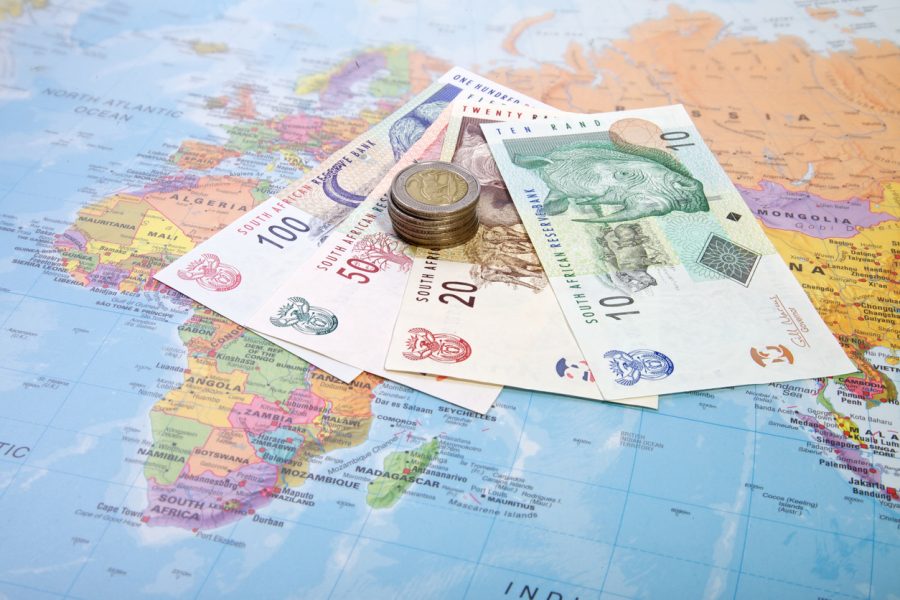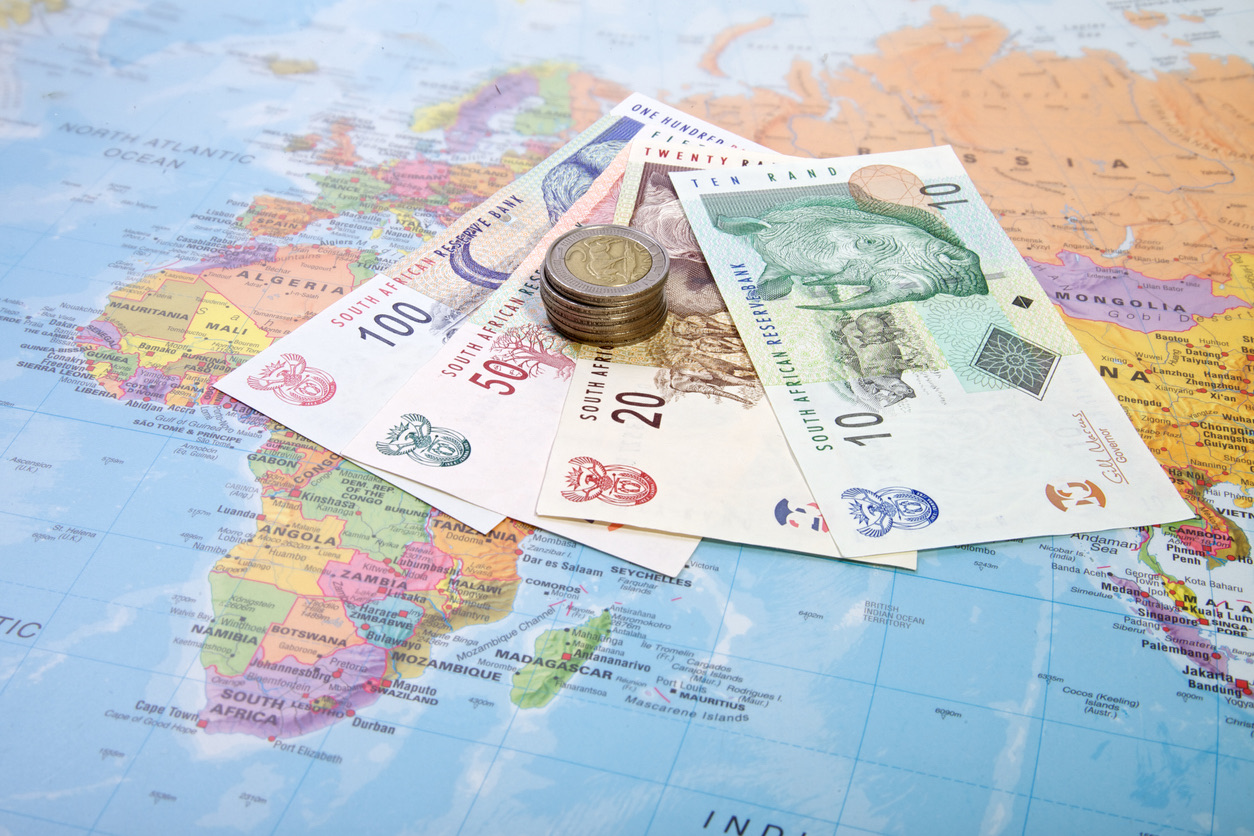
South African rand slipped after mixed economic data
The South African rand slipped on Tuesday after mixed local economic data, ahead of inflation figures and an interest rate decision this week.

Reuters: The South African rand slipped on Tuesday after mixed local economic data, ahead of inflation figures and an interest rate decision this week.
SOUTH AFRICAN RAND SLIPPED
At 1541 GMT, the rand traded at 18.48 against the dollar, about 0.7% weaker than its previous close. The dollar itself was last trading down around 0.14% against a basket of major currencies. Central bank data earlier in the day showed South Africa’s composite leading business cycle indicator rose 0.6% month-on-month in September. However, a survey by the Rand Merchant Bank showed business confidence slipped in the fourth quarter, mainly due to weak local demand for vehicles as consumer incomes remained under pressure in the face of high borrowing costs.
Investor focus will now shift towards local inflation data due on today and an interest rate decision by the South African Reserve Bank on Thursday. Global markets are also awaiting minutes of the U.S. Federal Reserve’s last meeting later in the day for cues on where interest rates are headed. Shares on the Johannesburg Stock Exchange were little changed, with the blue-chip Top-40 index closing near its previous close. South Africa’s benchmark 2030 government bond was stronger, with the yield down 15 basis points to 9.905%.
ALSO READ: Rand Report: Consolidating before continuation or reversal?
U.S. DOLLAR
Reuters: The dollar index was on pace to stem the tide of its recent downturn on Tuesday after minutes from the Federal Reserve’s most recent policy meeting showed the U.S. central bank was likely to maintain a restrictive stance on interest rates for some time. Fed officials said inflation remained well above their target but noted that rates would only need to be raised if new data showed insufficient progress on reducing price pressures. “The Fed minutes underscore the Fed’s most recent messaging, that they are still not prepared to declare victory and that they have no intention thus far to cut rates in 2024,” said Quincy Krosby, chief global strategist at LPL Financial in Charlotte, North Carolina.
The dollar has stumbled of late, dropping nearly 2% last week, as recent data has showed a slowing of the economy and inflation pressures, including the consumer price index, but not enough to increase fears a sharp looming recession, leading markets to price out any additional Fed rate hikes. Investors are gauging when the Fed may begin to cut rates, pricing in a nearly 60% chance of a cut of at least 25 basis points by May, according to CME’s FedWatch Tool, edging up from about 58% on Monday.
The dollar index rose 0.14% to 103.58 after falling to a fresh 2-1/2 month low of 103.17, its lowest since Aug. 31. The dollar’s recent weakness has buoyed the yen, along with expectations the Bank of Japan may eventually start to move off its ultra-loose monetary policy next year. The dollar pared declines against the Japanese currency, which last strengthened 0.0.1% to 148.35 per dollar. The greenback earlier hit its lowest level since mid-September at 147.14 yen, while sterling was last trading at $1.254, up 0.26% on the day.
ALSO READ: Earth receives laser beam message from 16 million km’s away
“Enough people were caught off guard by the CPI number to just kind of let the market go the other way and it’s had a nice move, and now it just feels a bit tired going down,” said Erik Bregar, director, FX & precious metals risk management at Silver Gold Bull in Toronto. Bregar said given the size of the dollar’s drop and big option expirations in the euro, dollar and yen on Wednesday, the greenback could stabilize. U.S. existing home sales dropped to the lowest level in more than 13 years in October as the highest mortgage rates in two decades and a dearth of houses drove buyers from the market.
The euro fell 0.24% to $1.0912 after reaching 1.0964, its highest since Aug. 11. European Central Bank President Christine Lagarde said the central bank has time now to assess how inflation unfolds after a record string of rate hikes but victory has not yet been won and bets based on short-term data flow are premature. In cryptocurrencies, bitcoin was down 1.53% at $36,871 after prosecutors said Binance chief Changpeng Zhao will step down and plead guilty to breaking criminal U.S. anti-money laundering laws as part of a $4 billion settlement resolving a years-long probe into the world’s largest crypto exchange.
BRITISH POUND
Reuters: The British pound hit a 10-week high against a weaker U.S. dollar on Tuesday as Bank of England Governor Andrew Bailey reiterated that the central bank’s stance on interest rates did not need changing. Bailey told the British parliament’s Treasury Select Committee that inflation was on track to get back to the central bank’s 2% target but there were risks that price growth could get stuck at a high level, adding that risks were on the upside. Bailey on Monday said it was “far too early to be thinking about rate cuts”.
At the same hearing, Catherine Mann, one of the more hawkish members of the Bank of England’s Monetary Policy Committee, said she favoured further tightening to ensure inflation returns to target. Mann was in the minority when she voted to raise the Bank Rate by 25 basis points in November, a decision that saw the BoE hold rates at a 15-year peak of 5.25% for a second consecutive meeting. “They (the Bank of England) are trying to retain the option to hike again if needed and at a minimum delay markets pre-emptively pricing any easing,” said Simon Harvey, head of FX analysis at Monex Europe.
The pound was last up 0.2% against the dollar at $1.2528, having earlier touched its highest level since Sept. 6 at $1.25535. Sterling was also up 0.2% at 87.33 pence per euro. Attention was also on Wednesday’s Autumn Statement where British finance minister Jeremy Hunt is scheduled to announce changes to fiscal policy aimed at boosting the stuttering economy. Analysts said large-scale announcements were not expected as the government would likely prefer to announce significant measures closer to elections, likely to take place in the second half of 2024.
“We think that larger tax cuts are less likely at the Autumn Statement, with the government instead likely to conserve most of its headroom for the Spring Budget,” said Goldman Sachs economist James Moberly in a note. Moberly also noted that a more substantial fiscal loosening at this stage would risk raising inflation and interest rates. Money market traders expect UK interest rates to have peaked, with markets pricing in around 70 basis points of rate cuts by the end of next year, implying almost three rate cuts by the end of 2024. Last week, markets had been pricing around 60 basis points of cuts by the end of next year.
ALSO READ: Newspaper front pages from around the world, 22 November 2023
GLOBAL MARKETS
Reuters: Asian stocks backed away from 2-1/2-month high on Wednesday and the dollar found support as investors’ tempered some of their earlier enthusiasm about the prospect of an end to U.S. rate hikes. MSCI’s broadest index of Asia-Pacific shares outside Japan has gained more than 3% since a week ago and hit its highest since September on Tuesday. But it fell 0.2% in early trade on Wednesday. Japan’s Nikkei rose 0.5%. Overnight the S&P 500 snapped a five-session winning streak and fell 0.2%. Chipmaker Nvidia reported revenue well above Wall St expectations after market close, but shares fell 1.7% due to the company’s downbeat China sales outlook.
Nasdaq futures were down 0.2% and S&P 500 futures fell 0.1% early in the Asia day. Volumes are likely to be lightened through the rest of the week by Thursday’s Thanksgiving holiday in the United States. “It appears that the short cover rally that began after the November Fed meeting is winding down and that buying and selling is beginning to alternate,” said Nomura’s chief macro strategist Naka Matsuzawa in a note to clients. The Federal Reserve released minutes from that meeting overnight though traders judged that policymakers’ promise to “proceed carefully” from here was not new information.
Ten-year Treasury yields were marginally lower at 4.40% in Asia trade. They have fallen about 50 basis points since the Fed held rates steady early in the month. Interest rate futures markets see almost no chance the Fed hikes again and price about 90 basis points of rate cuts through 2024, with a 30% chance they begin as soon as March. “Since the Fed believes that a soft landing is in sight, it would be foolish to risk it by hiking further than necessary,” said Rabobank’s senior U.S. strategist Philip Marey. “If we were to see stronger economic and inflation data before the December meeting, longer-term rates are likely to rebound and substitute for a rate hike. Therefore we do not expect further hikes.”
In foreign exchange markets, the dollar, which has been sliding since last week’s benign U.S. inflation report, steadied overnight and lifted from multi-month lows on several peers. It was broadly steady at $1.0921 to the euro and 148.17 yen in early trade on Wednesday. The Australian dollar was held to $0.6557 after recoiling on Tuesday from resistance at its 200-day moving average at $0.6588. “We expect bond yield gaps to remain a tailwind for the yen and renminbi as inflation in the U.S. continues to moderate and investors discount more rate cuts from the Fed,” said Jonathan Petersen, senior economist at Capital Economics.
“On this front, prospects for the yen look particularly promising risks are skewed towards the Bank of Japan again being an outlier in monetary policy, but this time raising its policy rate when most other major central banks are cutting.” China’s yuan, which has gained 2% in the past week and led Asian currencies higher against the dollar steadied at 7.1356 at the open of onshore trade. China’s major state-owned banks have been buying the yuan to hasten its recovery lately, two sources told Reuters on Tuesday.
On the data front, bellwether Singapore’s economy grew faster than initial estimates in the third quarter, helped by a resurgence in tourism. Later on Wednesday Reserve Bank of Australia Governor Michele Bullock makes a speech and U.S. jobless claims are due. In commodity markets Brent crude futures held just above their 50-day moving average at $82.64 a barrel. Singapore iron ore futures, up more than 10% for the month, held at $131 a tonne. Bitcoin wobbled lower to $36,163 as Binance chief Changpeng Zhao stepped down and pleaded guilty to breaking U.S. anti-money laundering laws as part of a $4.3 billion settlement resolving a years-long probe into the crypto exchange.
ALSO READ: Nzimande opened NSFAS applications with more GOOD news
Published by the Mercury Team on 22 November 2023
